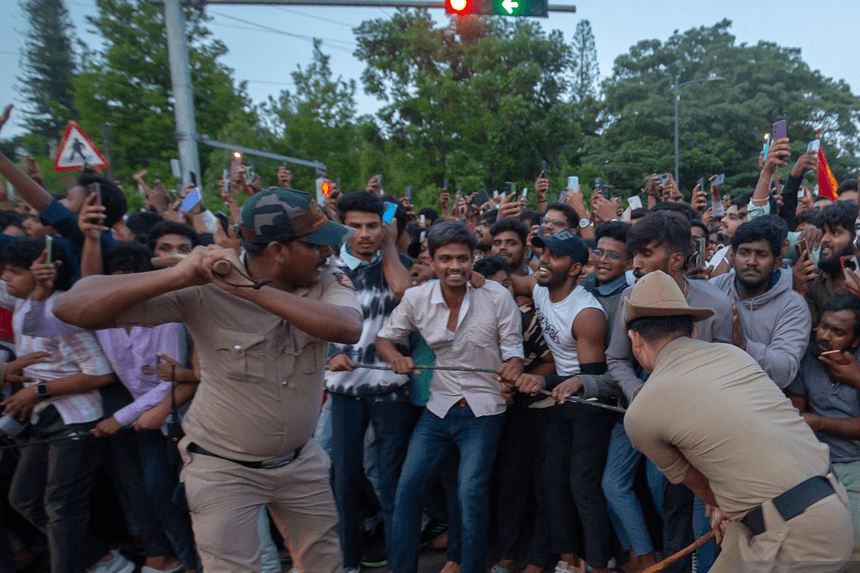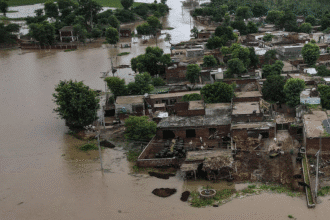There was never intended to be a Bengaluru parade catastrophe. Wednesday began with citywide enthusiasm as Royal Challengers Bengaluru (RCB) fans got ready to celebrate the team’s first-ever IPL title victory. Deeply passionate about cricket, Bengaluru saw this victory as a moment of pride rather than as a sporting event.
- Why were the masses of people so uncontrollably wild?
- What Specifically Happened During the Tragedy of the Bengaluru Parade?
- The Tragedy’s Victims: Who Were They?
- Was the Parade appropriately scheduled or run?
- How did the authorities handle the tragedy?
- How Might Another Bengaluru Parade Tragedy Be Prevented?
- Lessons Bengaluru and Other Cities Need to Learn
- In essence, a tragedy must inspire change.
Wearing team jerseys, waving flags, and supporting their heroes, people swelled onto the streets. Young local woman Shamili, who hardly follows cricket, joined the throngs around the M. Chinnaswamy Stadium only to enjoy the celebratory atmosphere.
“I missed Cricket. She simply wanted to be involved in something the entire city was talking about. But it descended into a nightmare in minutes.
Originally, a happy occasion, eleven individuals died, and hundreds more were hurt. The Bengaluru parade disaster exposed serious flaws in crowd control, planning, and emergency response, and happened shockingly quickly.
Why were the masses of people so uncontrollably wild?
State officials said the local police anticipated about 100,000 people showing up. Still, between 200,000 to 300,000 supporters poured into the area. The stadium itself has 32,000 capacity. The gathering swiftly grew unmanageable without any formal ticketing system, clear crowd control measures, or barriers.
Seeking a view of the RCB squad, people ascended fences, trees, and obstacles. Online videos show enthusiasts rushing forward, attempting to enter the packed arena.
People had nowhere to move, breathe, or flee from the density of the throng, which put them in danger. Under such close quarters, even a minor trigger might cause panic—and that is precisely what happened.
What Specifically Happened During the Tragedy of the Bengaluru Parade?
Several witnesses account for the scene as a stampede. People collapsed and were trampled in the anarchy. Later on, medical professionals verified that, including broken ribs, most victims passed from suffocation or blunt force injuries. The mob blocked roadways, hence emergency vehicles could not get to the injured in time.
Shamili related her horrific experience: “One moment I was standing, the next I was on the ground. I came upon someone stepping on. I was not able to breathe. I felt I would pass away there.
Police swinging lathis, long bamboo sticks used for crowd control, struck college student Haneef Mohammed. They want to drive people back. I had not even intended to walk into the stadium. All I wanted to see was from the outside. But the throng continued to swell.
The Tragedy’s Victims: Who Were They?
People between 13 and 43 lost their lives in the Bengaluru procession disaster. Among the younger was Divyanshi, a Class 9 student, accompanied by her family. Others joined just to be part of the historic event; they were college students, tech professionals, and daily wage people.
Underlining the little time emergency responders had, a Bowring and Lady Curzon Hospital doctor claimed most victims were “brought dead to hospital.” If rescue had come even a few minutes earlier, many of the victims may have lived. Read another article on Knife sale regulations
Was the Parade appropriately scheduled or run?
Very little formal planning went into organizing such a big public event, which raises management questions. Who took care of event planning and crowd management is a mystery.
The chairman of the Indian Premier League later said he had no idea who planned the procession logistics. Officials from RCB said they didn’t know about the catastrophe until they got phone warnings.
The team continued with a victory lap within the stadium. “They celebrated inside while others were dying outside,” said a witness who was not to be identified. This gap between what was occurring inside and outside the stadium mirrored the lack of real-time communication and coordination.
How did the authorities handle the tragedy?
Chief Minister of Karnataka Siddaramaiah swiftly declared a magisterial probe into the tragedy of the Bengaluru procession. In a public speech, he said: “A moment of joy has become sorrow.” We have to work out why and how this happened.
The RCB team claimed they changed their plans once they knew the situation and expressed grief in a statement. The most famous player of RCB, Virat Kohli, said: “At a loss for words. Surely gutted.
Although apologies have been given, people are seeking responsibility rather than only sympathy.
How Might Another Bengaluru Parade Tragedy Be Prevented?
Prevention of another Bengaluru procession disaster depends mostly on preparedness, organization, and responsibility. Citizen organizations and experts are advocating for required event permits with enforceable attendance restrictions. Along with emergency response coordination across health, law, and municipal departments, professional crowd control planning by qualified authorities is vital. Systems for real-time monitoring should be put in place to provide updates to several teams throughout events. To prevent congestion and panic, well-planned entry and departure locations as well as clear signs are also essential. These steps are not just excellent standards; they are also necessary to protect human life during big public events.
Lessons Bengaluru and Other Cities Need to Learn
The tragedy of the Bengaluru procession is not a one-off event. Similar incidents have happened all around when enthusiasm clashes with inadequate preparation. Still, it’s not something we have to repeat.
Public excitement must be balanced in cities with infrastructure preparedness. Celebrate, but not at the expense of human life. Every big gathering should be seen as a high-risk event needing expert control.
This catastrophe ought to be a turning moment for public event safety in India and around the globe.
In essence, a tragedy must inspire change.
The tragedy of the Bengaluru procession reminds us that, when safety is disregarded, festivities may rapidly become disasters. It emphasizes how urgently public event planning ought to be changed.
Although the death toll is unchangeable, the knowledge gained can direct next policies. For Bengaluru, this is a national wake-up call, not only a local one. If the right steps are taken, this tragedy could signal the start of a safer public gathering future for India.








